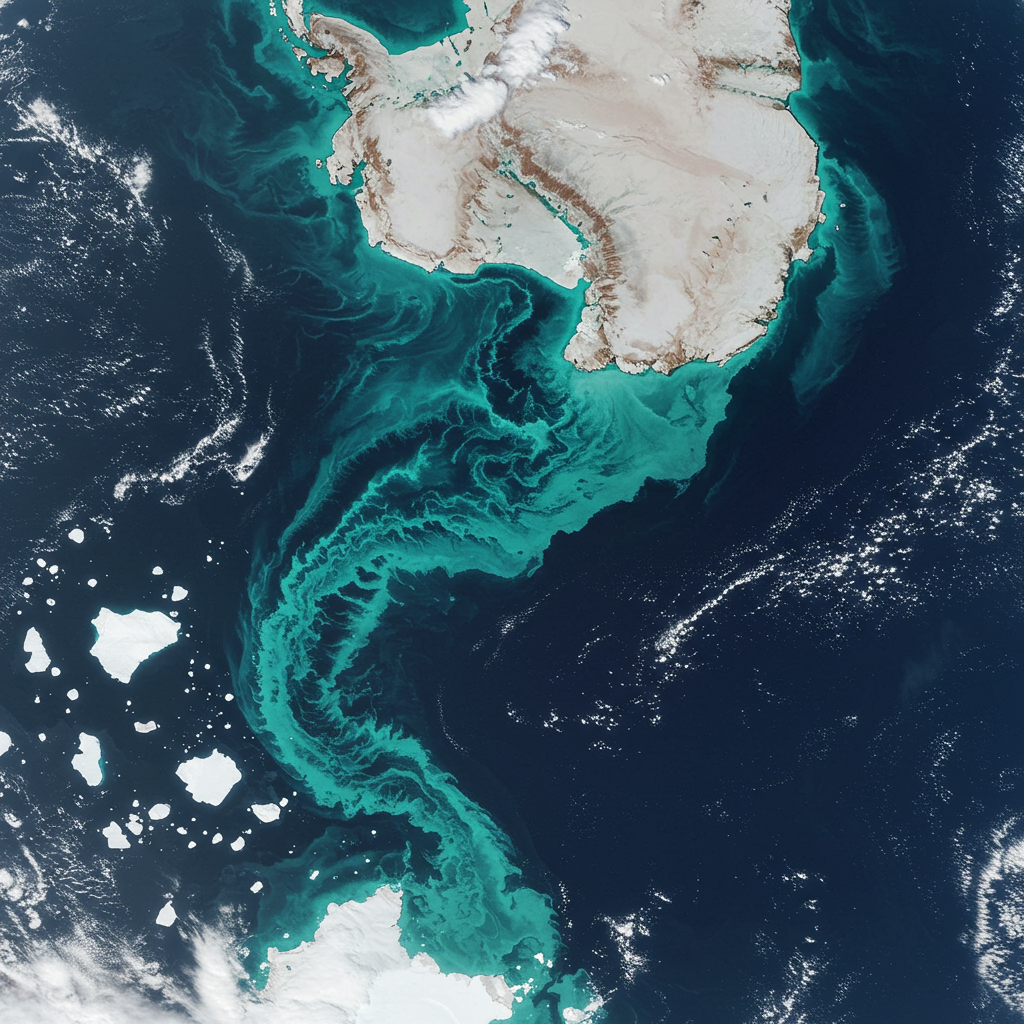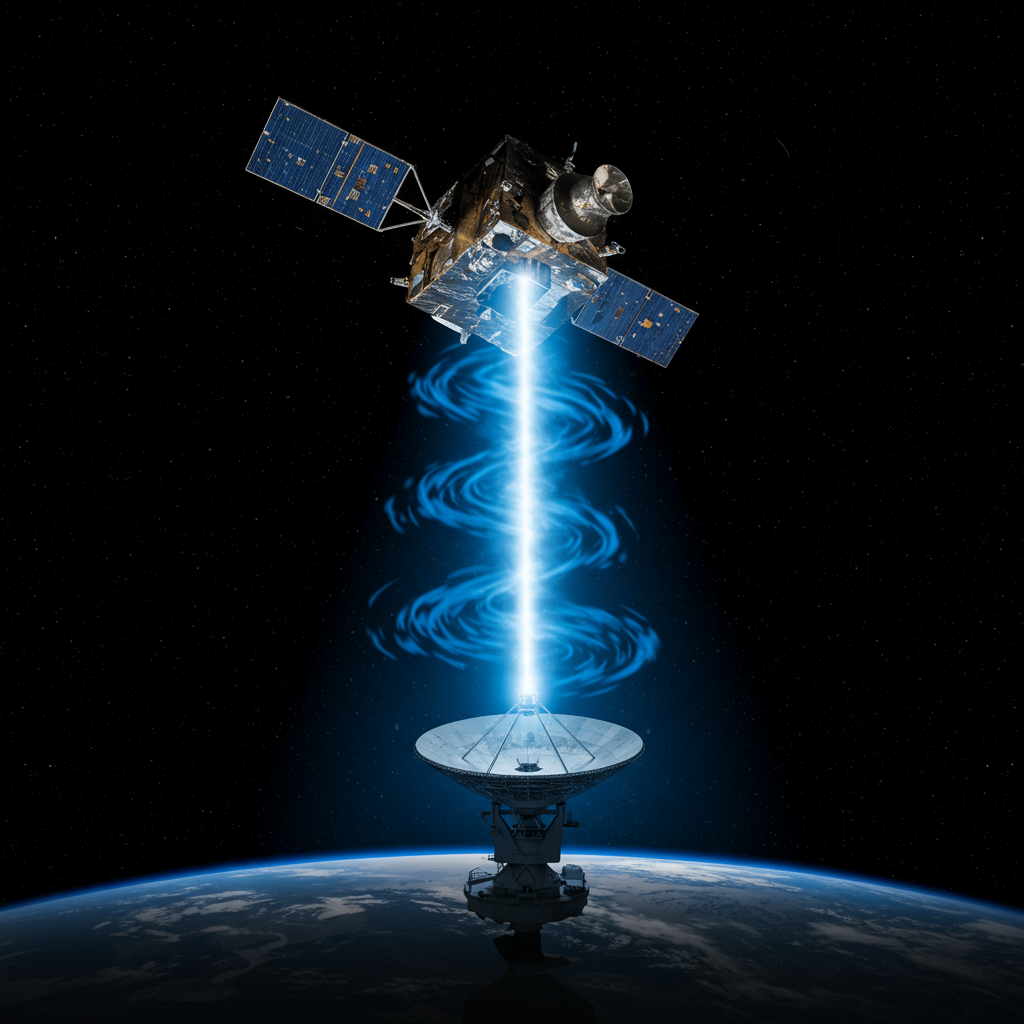Scientists have uncovered a profound and potentially alarming shift in the Southern ocean, detecting an unprecedented reversal in a critical ocean circulation system. This discovery, enabled by groundbreaking satellite technology, carries significant implications for accelerating climate change effects, from melting ice to rising atmospheric carbon dioxide (CO₂). While global attention often focuses on potential changes in the North Atlantic’s circulation, this new finding redirects focus to the Antarctic region and its vital, yet fragile, role in the global climate.
A Shocking Shift in Antarctic Waters
For the first time on record, an international team of researchers has identified a complete reversal in the Southern Ocean Meridional Overturning Circulation (SMOC). This massive system typically involves cold, dense surface water sinking into the deep ocean, acting like a global conveyor belt that distributes heat, carbon, and nutrients. However, data reveals that since 2016, this process has not only slowed but flipped. Instead of sinking, surface water in a key Antarctic region is now being replaced by warmer, saltier water rising from the deep ocean. This rising deep water carries with it centuries-old trapped heat and vast quantities of CO₂.
This phenomenon is distinct from a mere weakening of circulation. Antonio Turiel, a researcher involved in the study, highlights the severity, stating, “We are witnessing a true reversal of ocean circulation in the Southern Hemisphere—something we’ve never seen before.” This unprecedented shift is occurring while the scientific community also monitors signs of weakening in the North Atlantic’s counterpart, the Atlantic Meridional Overturning Circulation (AMOC). Unlike the SMOC’s detected reversal, the AMOC appears to be slowing down, potentially due to freshwater input from melting ice reducing surface water density. The AMOC plays a crucial role in transporting heat northward, significantly influencing climates in regions like Northwest Europe. The contrasting behaviors underscore the complex and interconnected nature of global ocean currents.
Satellites Uncover the Invisible Change
Detecting this monumental shift required overcoming significant technical challenges. The Southern Ocean is notoriously difficult to monitor using satellites due to its extreme cold, constantly changing sea ice, and harsh weather conditions. Traditional satellite data processing struggled to provide reliable measurements in this environment.
Researchers at the Barcelona Expert Center (BEC), a specialized laboratory within ICM-CSIC, developed innovative satellite data processing algorithms specifically tailored for the polar regions. This pioneering work was part of the SO-FRESH project, supported by the European Space Agency (ESA). The new processor, designed for ESA’s SMOS satellite, allowed scientists to obtain surface salinity data in the Southern Ocean with “unprecedented quality,” according to Verónica González from BEC. This breakthrough provided the clear evidence needed to confirm the SMOC reversal and offered a coherent explanation for the puzzling rapid loss of Antarctic sea ice observed in recent years. Accessing this kind of detailed, region-specific data is critical for understanding rapid environmental changes.
Direct Impacts: Melting Ice and Rising Heat
The immediate consequences of warm, CO₂-rich deep water rising to the surface in the Southern Ocean are already becoming apparent. This upwelling is identified as a primary driver behind the accelerated melting of sea ice in the region. Warmer water eroding ice from below dramatically speeds up the melting process.
Beyond sea ice, this warming water also threatens the stability of Antarctica’s massive ice shelves. Studies indicate that warmer ocean conditions can trigger rapid and potentially irreversible melting of these floating ice extensions, particularly in critical areas like the Filchner-Ronne and Ross Ice Shelves. This process involves the ocean melting the ice from underneath, leading to the retreat of the grounding line—where the ice sheet detaches from the bedrock and begins to float. Once this retreat passes certain points, it can become irreversible, even if ocean warming slows down. This means that the ice sheet behind the shelf could continue to slide into the ocean, significantly contributing to global sea level rise over centuries. The conditions triggering ice loss in these currently cold regions are beginning to resemble those already driving substantial melt in the Amundsen Sea sector, home to vulnerable glaciers like Thwaites. Understanding these ice sheet dynamics is crucial for predicting future sea level rise.
Global Repercussions: Carbon and Ecosystems
The rising deep water not only brings heat but also vast amounts of carbon dioxide that have been stored away from the atmosphere for potentially hundreds or even thousands of years. Scientists estimate that the long-term effect of this reversal could potentially double current atmospheric CO₂ concentrations by releasing this sequestered carbon. Such a massive increase would have catastrophic consequences for global warming.
Furthermore, the ocean absorbs a significant portion of the excess CO₂ from the atmosphere, a process known as ocean acidification. Since the industrial revolution, the absorption of human-caused CO₂ has already lowered the average pH of surface ocean waters by 0.1 units, representing a roughly 30 percent increase in acidity. The rising CO₂ from the SMOC reversal exacerbates this issue. Increased acidity reduces the availability of carbonate ions, which are essential building blocks for the shells and skeletons of many marine organisms. Creatures like oysters, corals, and tiny sea snails called pteropods (often called “sea butterflies”) are particularly vulnerable. Experiments show pteropod shells can dissolve in water projected for the year 2100, and severe dissolution is already observed in the Southern Ocean. Even non-calcifying organisms are affected; fish may lose their ability to detect predators in more acidic waters. When these foundational species are impacted, it threatens entire marine food webs, including those supporting global fisheries.
The Southern Ocean also plays a vital role in the broader global conveyor belt of ocean currents, transporting heat, oxygen, and nutrients. A disruption like this reversal impacts the entire system. The global conveyor normally brings nutrient-rich deep water to the surface, sustaining marine life. A shutdown or reversal could disrupt this flow, leading to nutrient depletion at the surface and potentially collapsing marine ecosystems over time.
Signals from a Remote Frontier
The planet is sending increasingly clear signals that critical climate thresholds are being crossed, according to researchers like Estrella Olmedo. This finding from the remote, difficult-to-monitor Southern Ocean is a powerful example. The unprecedented nature of the SMOC reversal underscores the potential for rapid, non-linear changes within the climate system.
Scientists are urgently working to improve monitoring and understanding of these complex processes. Building on the success of the SMOS processor, new ESA-funded projects led by BEC are already underway for 2025. ARCTIC-FLOW will focus on monitoring freshwater and density fluxes in the Arctic, while the CCI OSHF initiative will analyze heat exchange at the ocean surface globally. These efforts aim to develop the next generation of satellite methodologies needed to track, understand, and anticipate the effects of accelerating climate change in Earth’s most critical, yet often overlooked, regions.
Frequently Asked Questions
What exactly is the Southern Ocean circulation reversal detected by scientists?
The detected reversal means that the normal pattern of the Southern Ocean Meridional Overturning Circulation (SMOC) has flipped. Typically, cold, dense surface water sinks to the deep ocean. However, since 2016, in a key region near Antarctica, warmer, saltier deep water is rising to the surface instead of surface water sinking. This unexpected change indicates a significant disruption in how this crucial part of the global ocean circulation system is functioning.
How was this unprecedented Southern Ocean current shift discovered?
Scientists discovered the reversal using innovative satellite technology. Researchers at ICM-CSIC’s Barcelona Expert Center (BEC) developed a new data processing algorithm specifically for the European Space Agency’s (ESA) SMOS satellite. This new processor enabled scientists to obtain high-quality measurements of surface salinity in the challenging Southern Ocean, a region previously difficult for satellites to monitor due to cold and ice. The precise salinity data revealed the sustained increase on the surface that indicated the deep water was rising.
What are the main climate concerns resulting from this Southern Ocean reversal?
The reversal is linked to several major climate concerns. Rising deep water brings heat, accelerating the melting of Antarctic sea ice and potentially triggering irreversible melting of massive ice shelves, contributing significantly to future global sea level rise. It also brings vast amounts of stored carbon dioxide (CO₂) to the surface, which could be released into the atmosphere, potentially doubling current atmospheric concentrations. This CO₂ release also worsens ocean acidification, harming marine ecosystems. The disruption could also have cascading effects on other global circulation systems.
Conclusion
The detection of an unprecedented reversal in the Southern Ocean’s deep circulation marks a critical moment in climate science. It highlights that the impacts of climate change are not limited to gradual warming but can trigger abrupt, fundamental shifts in Earth’s most important regulatory systems. The SMOC, long a silent engine of the global climate, is now signaling profound distress. Thanks to advanced satellite technology, scientists can observe these changes in remote regions once hidden from view. This discovery underscores the urgent need for continued monitoring, research, and global action to mitigate the drivers of climate change and safeguard the future of our planet’s oceans and climate.




